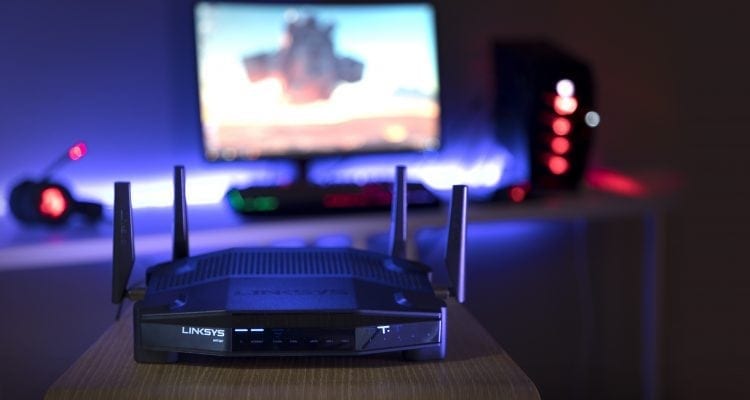- Killer Networking support
- Prioritization of all network devices
- Ease of use, easy setup
- Premium price point
- Larger footprint than previous WRTs
On to the Tests!
There are a few tests I want to do with the Linksys WRT32X. The first one will be testing the Killer engine in terms of network latency, the service response time usually given in milliseconds (ms). The lower the number, the better you can act within the game and faster you can get your kills.
Test 1: Network Latency with the WRT32X and Killer
In order to test the Killer Prioritization Engine and network latency, I made use of Team Fortress 2 (which is free-2-play now). TF2, being a Valve game, has the ability to display more than just FPS (frames per second) and I will be looking at the network latency and other network statistics it can provide. Here we hope that while playing TF2 and toggling the Killer Priority Engine on and off, we will be able to see the server response time fluctuate to our benefit.
I lost my screenshots and video clip but I did manage to see my network latency start at 70ms when the Killer Priority Engine was off and then it dropped to 42ms when the Killer Priority Engine was turned on. When I turned off the feature, the response jumped back up to the 70-80ms range. That’s pretty impressive, actually roughly improving the connection to the server with a 30ms decrease in response time!
Test 2: Streaming HD Videos
The second test will be streaming videos on the MSI laptop while also streaming other videos on other computers on the network. For the videos, I make use of YouTube gameplay videos at the 1080p60 resolution. I also start up Netflix on the PlayStation 4 and watch Sta Wars: Rogue One at 1080p as well. Typically, 1080p videos require a decent download speed and since our connection has a maximum of 5Mbps, this test can also get a little tricky but should be a good way to see the Killer Prioritization Engine running as I move the priority around.

The MSI streams a recent uploaded footage of Dark and Light which was recorded at 1080p60. YouTube is great as it allows those who care to see the geeky side of a video stream. You can see while steaming the gameplay video that my connection speed is roughly 5Mbps (5435Kbps).
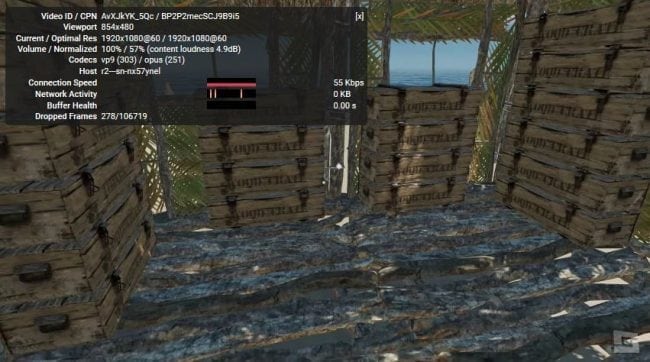
The desktop, which is streaming a gameplay episode of Stranded at 1080p60, has a different story. Here you can clearly see that the connection speed is a measly 55Kbps and in fact the video took over 2 hours to complete the 20mins.
While this is all going on, the Netflix stream of Star Wars: Rogue One kept playing with some buffering happening. Netflix was reporting it was being streamed at 240p which is well below the 1080p resolution. When I turned off the Killer Priority Engine on the MSI laptop, the Netflix stream would recover and go back to being 1080p. When I moved the priority around manually via the Linksys WRT32X web interface, I could get the YouTube stream on the desktop to pick back up to 1080p too.
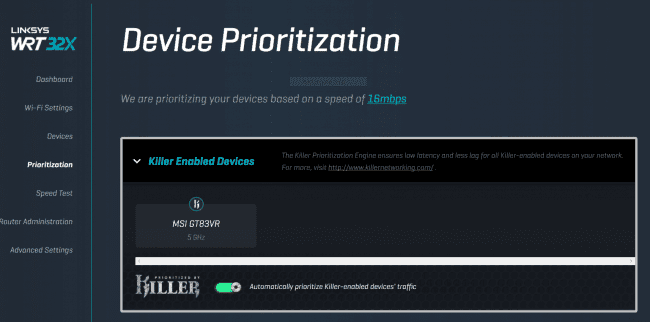
When you have a Killer networking component or a computer that has Killer networking gear inside of it, it automatically is picked up by the Linksys WRT32X and is given highest priority with network traffic. If you need to disable the prioritization, then you just turn off the feature and it will fall into the same listing as the other devices on the network.
Test 3: Laptop Test
It is always good to check the bandwidth you can get when making use of your portable devices. In this test, I make use of a Dell Latitude E7470 with its Intel Dual-band 802.11ac AC1200 wireless card. With the single 5 GHz band, there is a theoretical speed of 867 Mbps.
With the laptop tests I make use of iPerf3 and its ability to send data between endpoints. To see the maximum throughput, I send datagrams via UDP over a 120 second (2 minute) period.
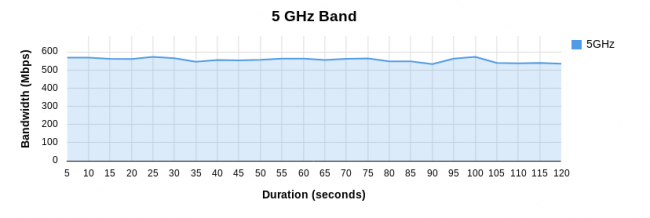
The Linksys WRT32X with the Dell Latitude averages 554.79 Mbps when sending UDP packets.
Now I’ll test the 2.4 GHz band with the same protocol and time period

The Dell Latitude averaged 86.28 Mbps on the 2.4 GHz band. To maximize your performance, ensure that devices that need the extra bandwidth are on the 5 GHz band, whereas devices that might not need the bandwidth but perhaps need to be placed further away from Linksys WRT32X are on the 2.4 GHz band.
Test 4: Smartphone Test
Since different mobile devices can have different wireless components, it is always a good idea to check laptops and of course the most (typically) used mobile device most people have: a smartphone. In my case, I will utilize my iPhone 7 with its 802.11ac support.
First up, let’s look at the 5 GHz band.
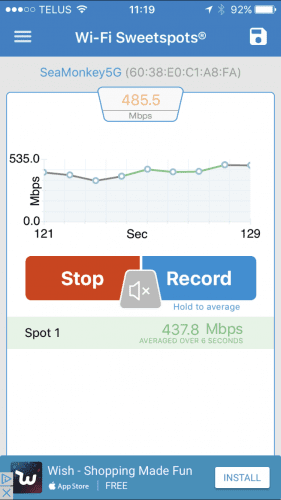
The average on this test was a bit lower than the Wi-Fi throughput test on the Dell laptop. Various factors can be in play such as interference, channel, bandwidth of the channel and distance to the Linksys WRT32X too. Though I’m not going to knock the slower result on the smartphone, it is still within a decent range for the 5 GHz band.
Next up, we have the 2.4 GHz band.
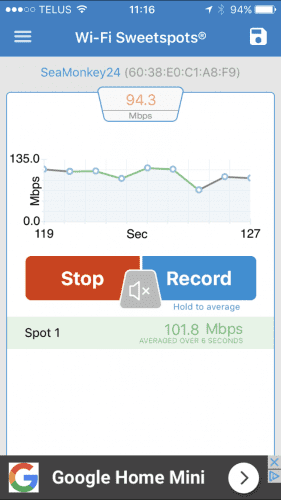
The average speed was faster on the iPhone 7 than my Dell Latitude, but again a variety of factors can come into play. So that both the laptop and iPhone 7 had similar speeds with the 2.4 GHz and 5 GHz band, I am content with the results I saw with both.

